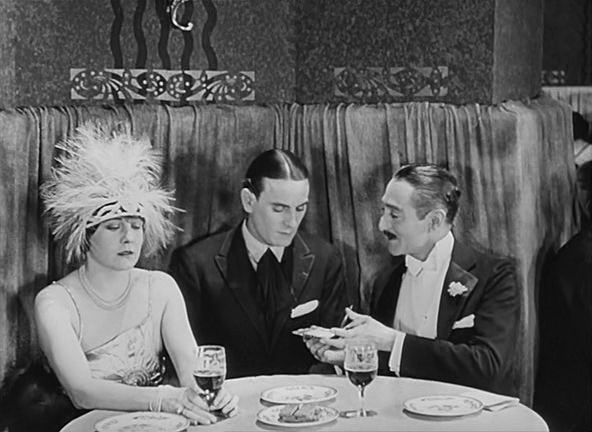The Beginning Is The End
Jesse Walker has taken us through the top ten films of 2003, 1993, 1983, 1973, 1963, 1953, 1943 and 1933. Now he's come upon the silent era, where many films no longer exist, and those that do are harder to see. Thus, he has no top ten list, but he does have a few notes.
His favorite film of 1923 is Harold Lloyd's Safety Last! Can't argue with that, but that's the only title Jesse lists. I'm not asking for a top ten here, but there are a few more he might mention. For instance, Lloyd, who was doing two features a year then, also did Why Worry?, another classic (and another title with its own punctuation).
Even more productive in 1923 was Buster Keaton, who made his last two silent shorts, The Balloonatic and The Love Nest (like them both, especially the latter), and his first two true Keaton features--Three Ages and Our Hospitality (like them both, especially the latter).
Another film I like is Cecil B. DeMille's silent The Ten Commandments, which, unlike his sound version, is mostly set in the present.
Other films of note in 1923 include The Covered Wagon, The Hunchback Of Notre Dame, Rosita, Scaramouche, The White Rose and A Woman Of Paris. The last is by Chaplin, but doesn't star Chaplin--some call it a classic, which is vastly overrating it.
Going back ten years to 1913--a century ago in cinema--Jesse likes the Fantomas serial. I've never seen any of it.
The film world was a wild place in 1913, with moviemakers still developing techniques and trying to establish an industry. You had early versions of Ivanhoe, Dr. Jekyll And Mr. Hyde, A Christmas Carol, Hamlet, The Sea Wolf, David Copperfield and other titles that would be remade over and over. You had D. W. Griffith making a film a week, some of which are still pretty entertaining. You had Keystone Studios, where they made wild comedies, and where boss Mack Sennett hired some stage comic named Charles Chaplin, though he didn't appear in anything until 1914.
And that's where Jesse ends. Odd, actually, since 1903 has some well-known stuff I bet he's seen--Electrocuting An Elephant, The Music Lover, Life Of An American Fireman and, above all, The Great Train Robbery. And 1893 is the beginning of film as we know it, with Edison's famous Blacksmith Scene made at the Black Maria studio.
Anyway, now that Jesse is done, I will take over. Tomorrow I'll put up my look at the 2013 film year, so stay tuned.




2 Comments:
I certainly do like The Balloonatic and Our Hospitality; I have yet to see the other Keaton and Lloyd movies you mention, but I'm sure I'll enjoy them when I do.
The Great Train Robbery is an important film, but let's face it, it's pretty dull to watch today. I've seen some Melies shorts from 1903 that I like better, but none so memorable as to be honored as a "favorite" of any kind (unlike last year, when I could point to Le Voyage dans la lune as a standout from 1902). So I figured it was better to cut things off at the century mark this time.
Almost every film from the early days is more of historical interest than story interest, but just watching people alive and breathing over a century ago as the filmmakers try to figure out what to do with this new instrument is fascinating.
Post a Comment
<< Home